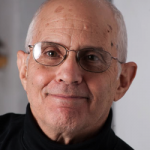Us and Them: The Eternal Division We Have to Transcend
Rawpixel Ltd/Thinkstock
Almost every weekend, my wife and I hike on a well-maintained trail abutting Los Angeles. The hikers we come across are as diverse as the passengers on a New York subway. We see faces whose ancestry points to Europe, Asia, Africa, South America and the Middle East. We hear accented English and sometimes Spanish, Chinese, Japanese, Hindi, Hebrew, French, Italian, Russian and languages we can’t identify. The trail attracts so many people of Iranian descent that we’ve taken to calling it the Persian Trail and learned to say “good morning” in Farsi.
I cherish the diversity; it’s one of the great treasures of life in America. And it pains me that not everyone feels that way. Some people are bewildered by it and find it discomfiting. Some feel threatened by it. Some hold it in such contempt that they lash out against it, with angry words, vindictive legislative proposals and, tragically, violent rage.
As is distressingly evident in the news, the tension between those who value cultural, ethnic and religious pluralism and those to whom it represents an existential threat has surfaced in ugly ways throughout the world. It is, of course, a major factor in the U.S. election and in the UK’s Brexit vote. It also explains the disturbing rise of ethno-nationalist political parties in Europe. And it explodes with force in other parts the world, where the forces of Us and Them clash with weapons, not just votes and words.
Some people not only find it easy to live among the Other, they feel enriched by the experience. Others, alas, are repulsed by the Other. When they can’t maintain their distance they may grudgingly tolerate the unwanted presence, but that tolerance might last only until they compete for the same job or date the wrong person. Same as it ever was—ever since Us and Them first contended for a water hole or a hunting ground or the favor of gods.
Sorting out what makes some people pluralists and others exclusivists may be one of the more important issues confronting us as a civilization. One obvious reason some celebrate diversity is exposure. I grew up in Brooklyn, long before that densely populated borough became a hipster nexus. Back then it was a symbol of what was called The Melting Pot, a place where immigrants and transplants of different origins mingled in schools, workplaces, restaurants, bars, buses, subways and ballparks. The progeny of the original settlers mingled even more intimately, and with ever-greater ease and comfort. Many intermarried, mixing up the gene pool in new and beautiful ways. Ever since, I have been enriched and illuminated by my exposure to people from all parts of the globe and all of America’s subcultures.
But, while familiarity breeds acceptance more often than contempt, it doesn’t always. Even in the Brooklyn of my youth there were bigots and racists. Some of the whites who cheered for Jackie Robinson and abhorred the Jim Crow racism of the south would panic if a black family moved to their block. And many a Christian with close Jewish pals drew the line if their child or sibling fell in love with one—and vice versa. Subsequent generations had broader boundaries, and sometimes no boundaries, and that evolutionary tendency persists. It is reason for optimism. Still, our species will not advance as rapidly as it needs to unless we can speed that process up.
One hopeful sign is the emergence of disciplines with names like intercultural competence and cultural proficiency. I’ve learned a lot about this from friends who train people to become more aware and more skillful in settings marked by diversity. Kikanza Nuri Robins, coauthor of Fish Out of Water and founder The Robins Group, says cultural proficiency “provides healthy and compassionate responses to differences in race, ethnicity, language, gender, sexual orientation, physical and mental ability.” Tom Morgan, the Principal Consultant at Morgan Intercultural, helps clients develop “the skills, awareness and knowledge to be able to read culturally diverse situations accurately—and to exhibit culturally appropriate behavior in many contexts.”
He says that research shows there are discrete levels of intercultural competence, and at the lower levels we find fear, anger and conflict. “At the ‘defense polarization’ stage,” Morgan says, “people see cultures that are different from ‘ours’ as being a threat to ‘our’ way of life.” That feeling of being under siege gives rise to protective measures ranging from walls to warfare. Perhaps the methods used to improve cultural proficiency in business and education can help everyone achieve understanding, openness, empathy and respect for the Other. What could be more useful at a time when avoiding “Them” is less and less possible and hostility is more and more dangerous?
Ultimately, pluralism and diversity are not just social issues but spiritual ones. I don’t just mean the obvious fact that some religious teachings promote exclusivism and exacerbate enmity toward the Other, while others embrace inclusivity and erase barriers. I also refer to the deeper, more subtle issue of individual spiritual consciousness. The key word here is identity. Deep spiritual practices expand the locus of one’s identity, moving us over time from seeing our limited, individuated persons as the center of the universe—what scholars call an egocentric identity—to ever-widening circles. Eventually, we don’t just understand we are linked to all other sentient beings, we sense it, feel it, know it at the depth of our souls. That’s when the Other becomes not a threat, or a nuisance we’re forced to put up with, but as part of ourselves and therefore worthy of concern and empathy.
That progressive broadening of one’s kinship circle is not just a noble aspiration. It breaks down barriers and raises our capacity to give and receive love. We need to cultivate it, both for ourselves and the future of humanity.


